Knife – 42 Hunter Forged from an Implement Tine – Cold Blued
Notes: cross peen or rounding hammer would be used
- forge the point first
- keep it straight as you go
- keep refining the profile within each section as you go
- for the entire blade profile (we’ll do the tang after)
- after the profile is formed forge the edge
- forge one section at a time
- Remember to use the right side of the hammer to pull the steel (round side or cross peen side)
- rough profile the length a section at a time
- go back and smooth it after
- Keep the knife bigger than the patter
- Blade is 5 1/2″
- Overall Length is 9 3/4″
- The blade was blued with gun blue (cold blue)
This knife was forged from an implement tine. This should be close to 5150 if the information on the internet is correct. I found it to be a little harder to forge than the 108x.
I drew out the blade first, shaping it as I went. From a forging perspective it was much different than the last knife I forged except this was to be a full tang.
Wetting the anvil and hammer helps get rid of the scale. Just dip your hammer in your water bucket a few times and throw the water on the anvil and continue as normal.
After forging, I started with a 36-grit ceramic belt and worked my way up to 220. I think I’m starting to hit the other end of the learning curve. Grinding is getting easier. I still did some hand sanding, I only sanded to 180 grit then hit it with a course finishing belt.
There are times when I get closer and into finish sanding, I have the belt going as slow as it will go. It allows better control and mistakes become much smaller and easier to overcome. At this stage taking your time and constant focus is the best advice I can give.
This time I didn’t forget to normalize. I almost forgot my makers mark, but added it in between the first and second normalizing cycle.
Normalizing Your Knife
- When a knife is forged it needs to be normalized. Forging adds stress to the steel. If you research this, you will find it has to do with the grain structure of the steel. But for now, just know it needs to be done.
- Normalizing is a pretty simple process. Heat the metal to nonmagnetic then let it air cool. For most metals we’ll talk about in this book, doing this three times should do the trick. After annealing you can go straight to heat treatment.
- Typically normalizing is not required with stock removal but I recommend you normalize recycled steel. If in doubt, normalize.
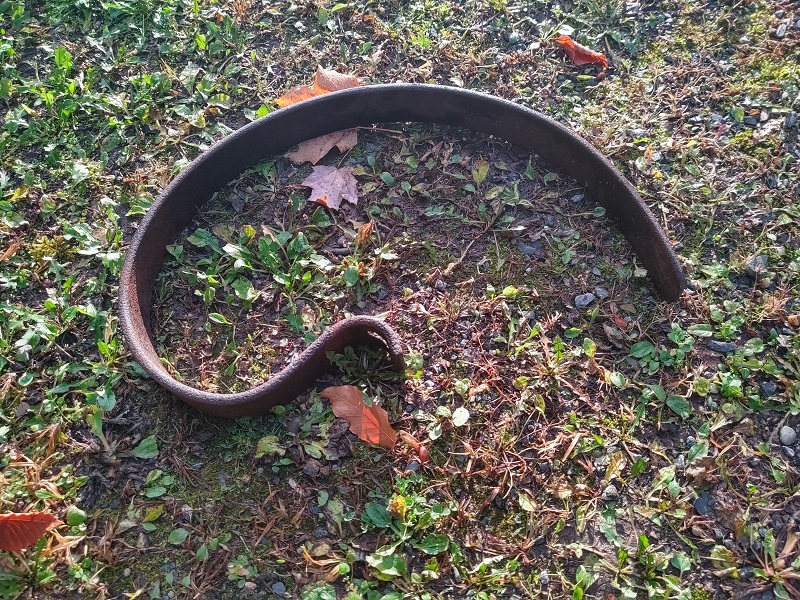
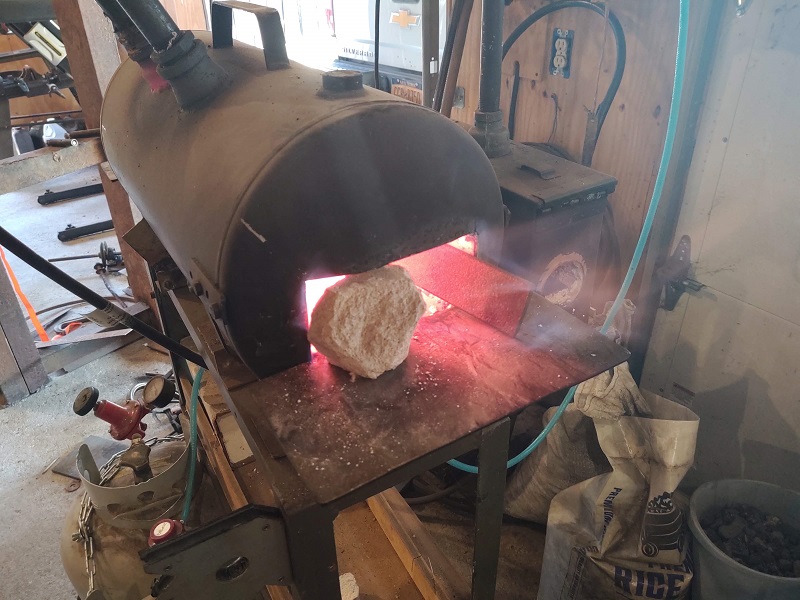
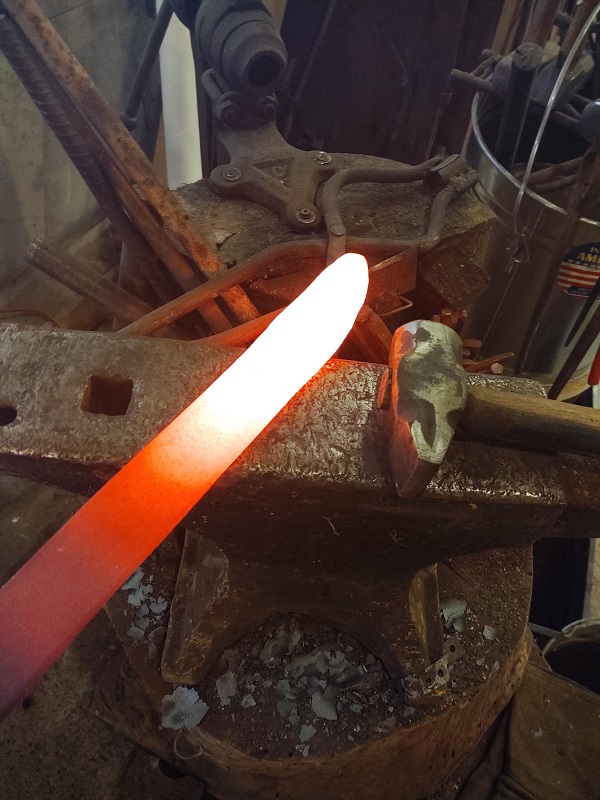
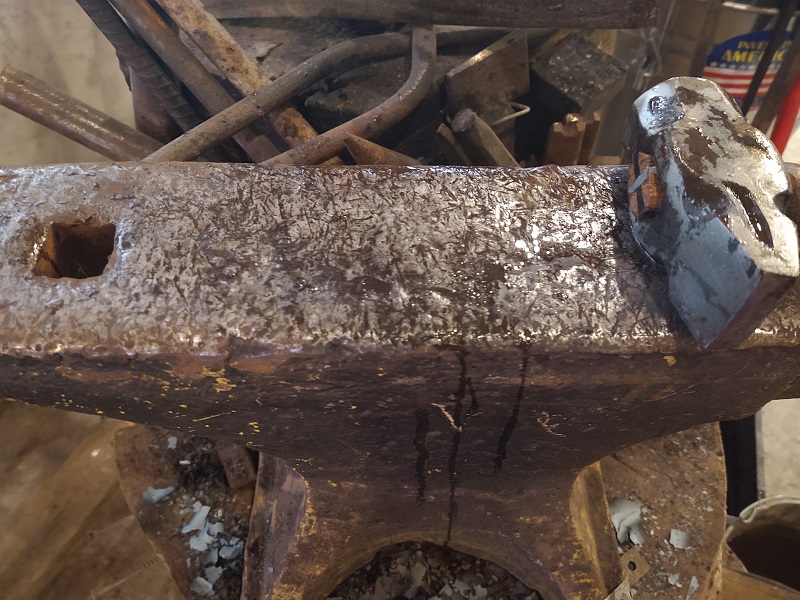
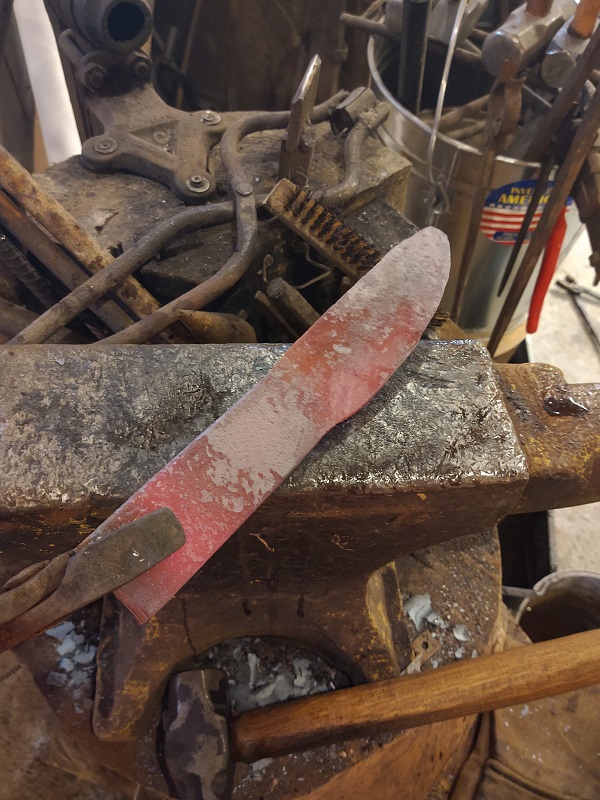
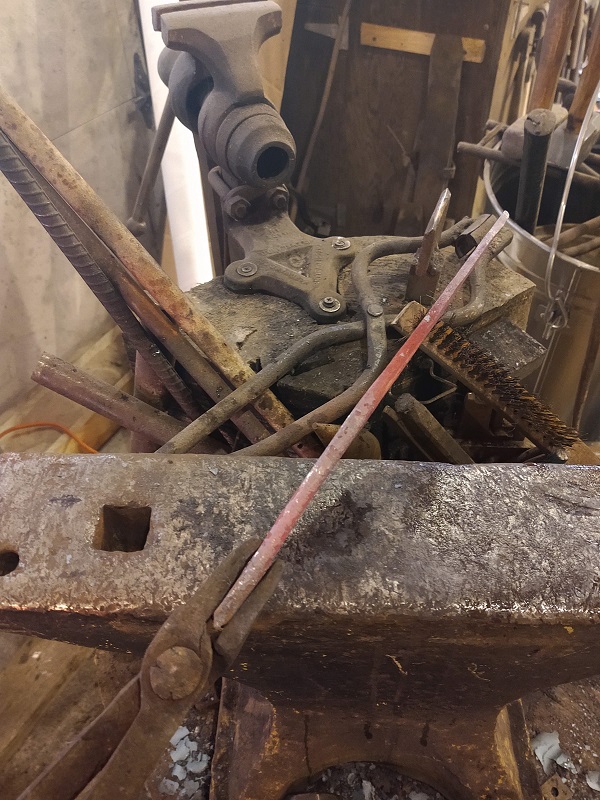
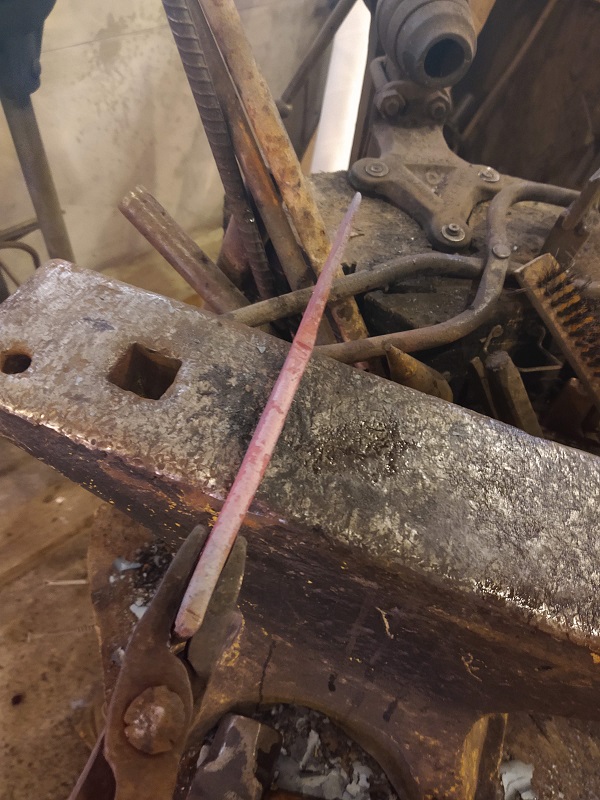
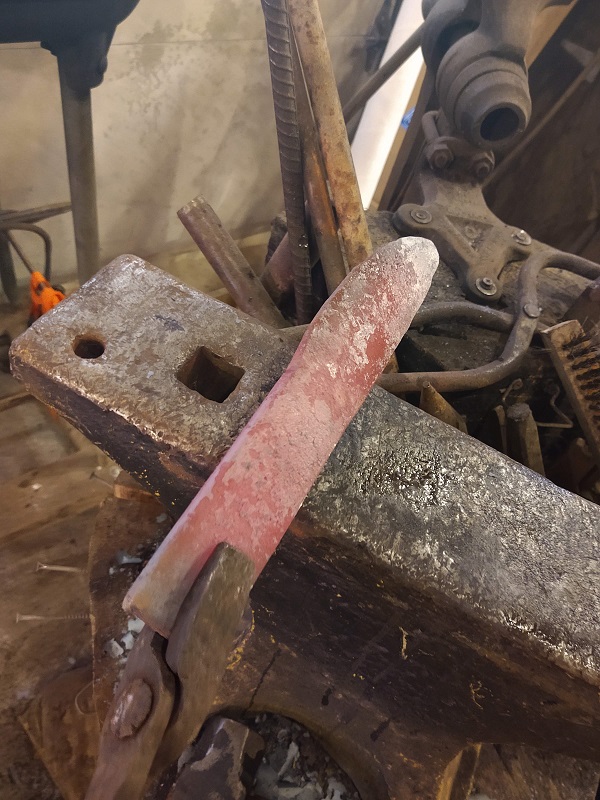
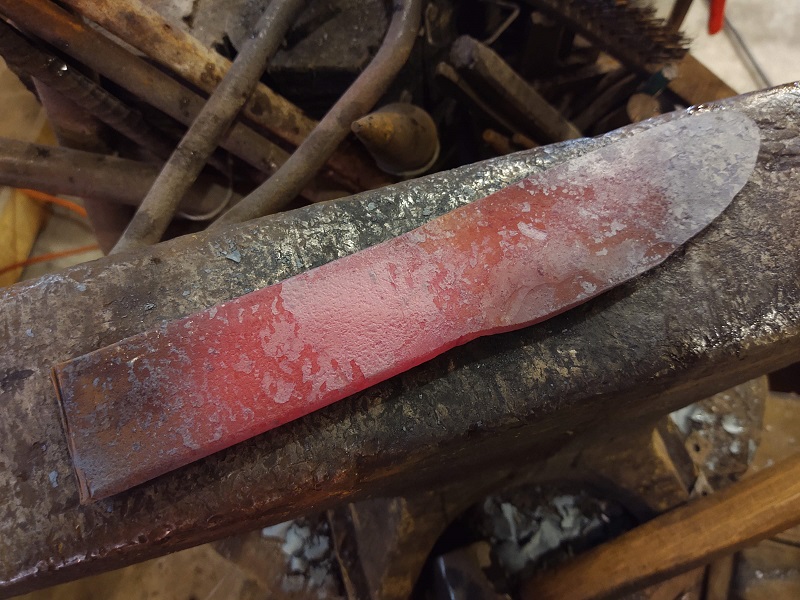
Adding the Jimping
I marked out and drilled the tang holes and added the Jimping to “Knife – 42 Hunter Forged from an Implement Tine – Cold Blued”.
I marked the tang for the spline embellishment. I marked about every quarter inch and marked the center line. I drilled holes at each intersection. Then using the corner of a square file, I cut a V in-between each hole on both sides of the spline.
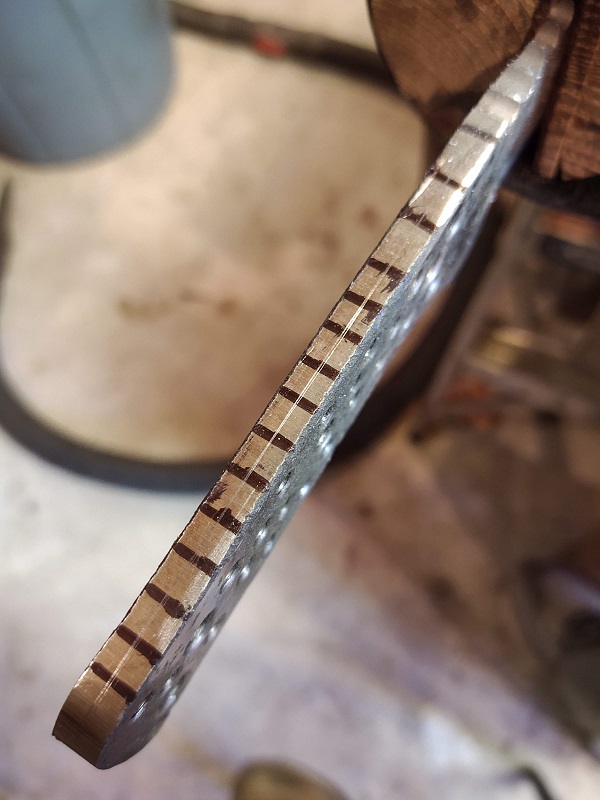
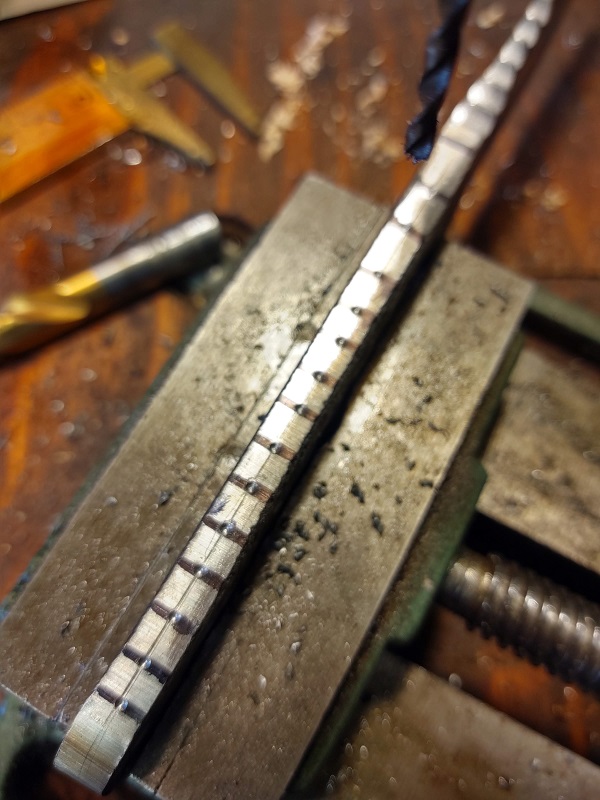

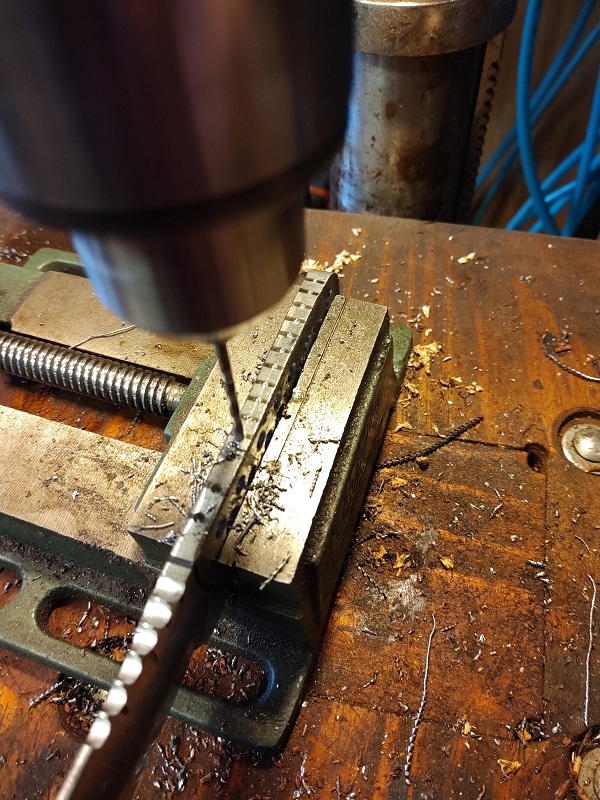
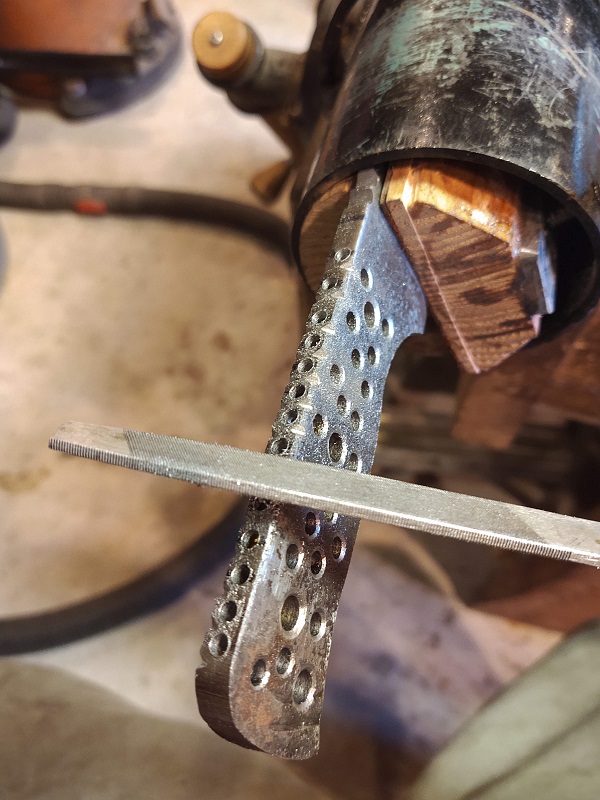
Cold Bluing
The blade of this Knife – 42 Hunter Forged from an Implement Tine – Cold Blued was blued using a cold bluing technique. This will help keep the high carbon blades from rusting.
Here is my technique.
- Polish the blade to the desired finish. A polished blade takes blue better, but it’s not a requirement.
- Wipe the blue on and let it sit for a minute or so. Buff it out.
- Repeat the entire process until it reaches the texture you like, or it stops changing.
________________
As an Amazon associate, we earn income from qualifying purchases when you click on a link. Your link clicks help us fund our website.________________

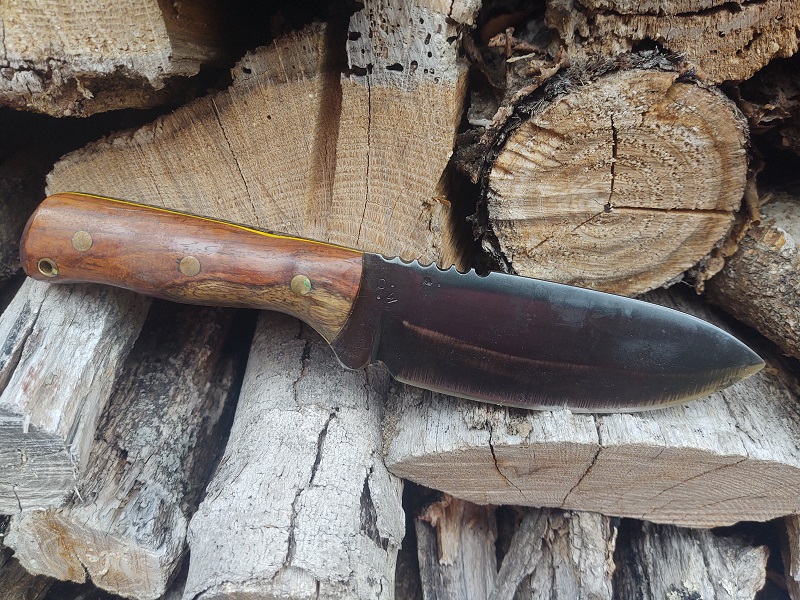

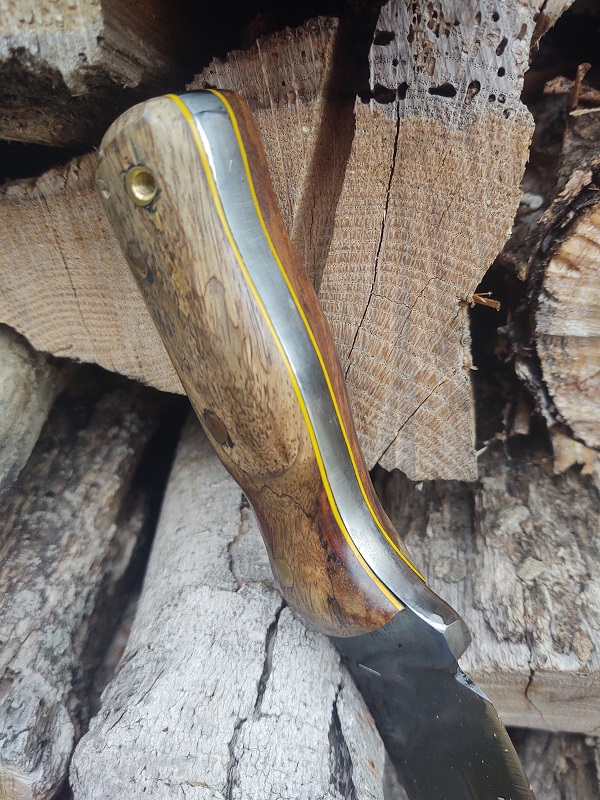
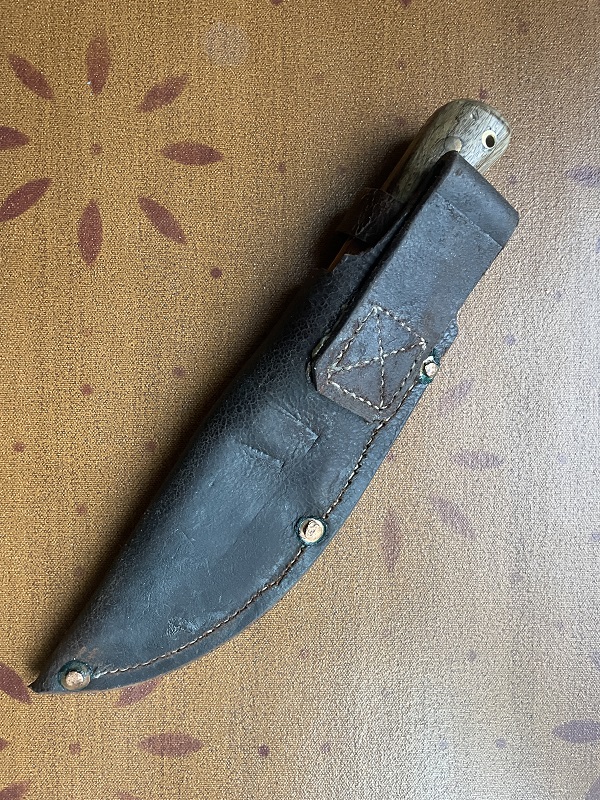
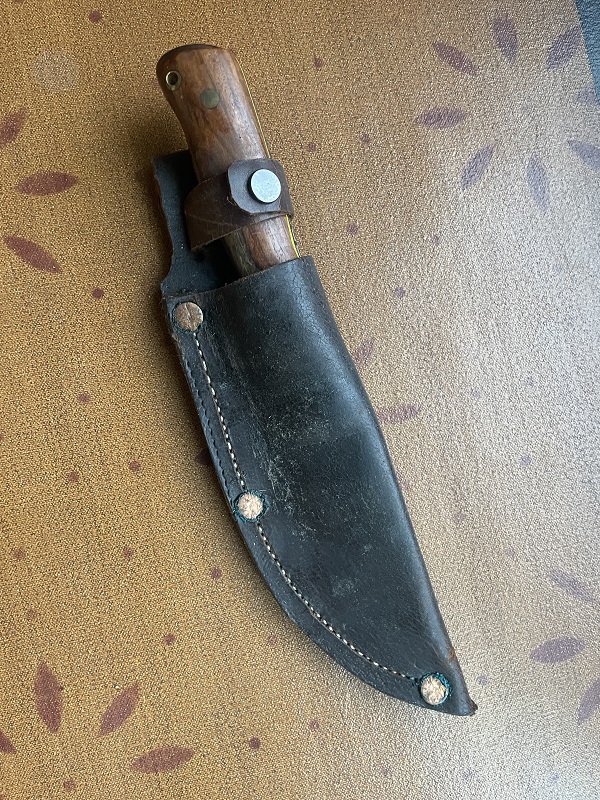
[…] Knife – 42 Hunter Forged from an Implement Tine – Cold Blued […]
[…] Knife – 42 Hunter Forged from an Implement Tine – Cold Blued […]
[…] Brut de Forge Bowie was forged from a similar tine as Knife – 42 Hunter Forged from an Implement Tine. To the right it is being normalized. Notice the groove (or fuller) in the tang. I cut that with […]
[…] Knife – 42 Hunter Forged from an Implement Tine […]
[…] made a few items from these implement tinesincluding a knife. Here I made a couple Froes. I sold all I had last year, including my user at a flea market, so it […]